How Hospitality Brands are Preparing to Re-open Post COVID-19
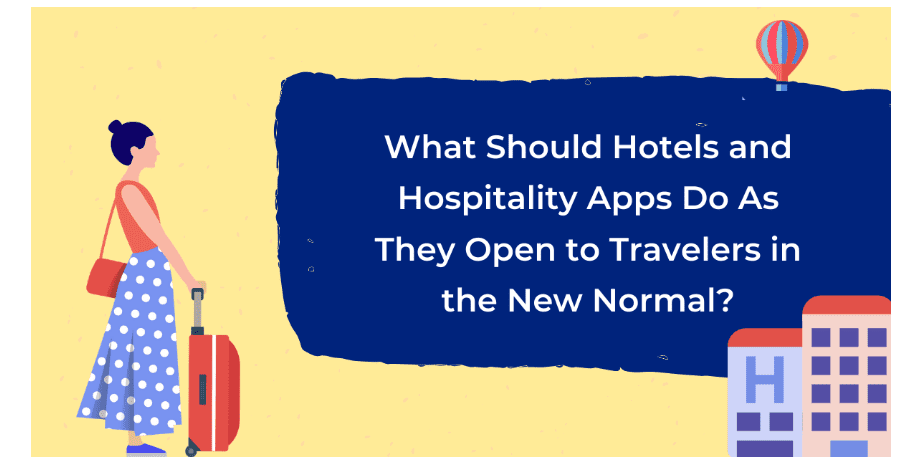
Reading Time: 4 minutes
COVID-19 has altered the way we live, work, and socialize for a long time. However, the truth is, we cannot snap back to the way we used to live and travel before the pandemic.
| Bonus Content
👉 How hospitality brands are capturing the micro-moments in their users’ journey [Download Ebook] |
If you’re a hospitality brand that’s preparing to re-open post COVID-19, you’ll need to factor in these changing user preferences.
How Hospitality Brands are Responding to the Post COVID-19 Situation World-over
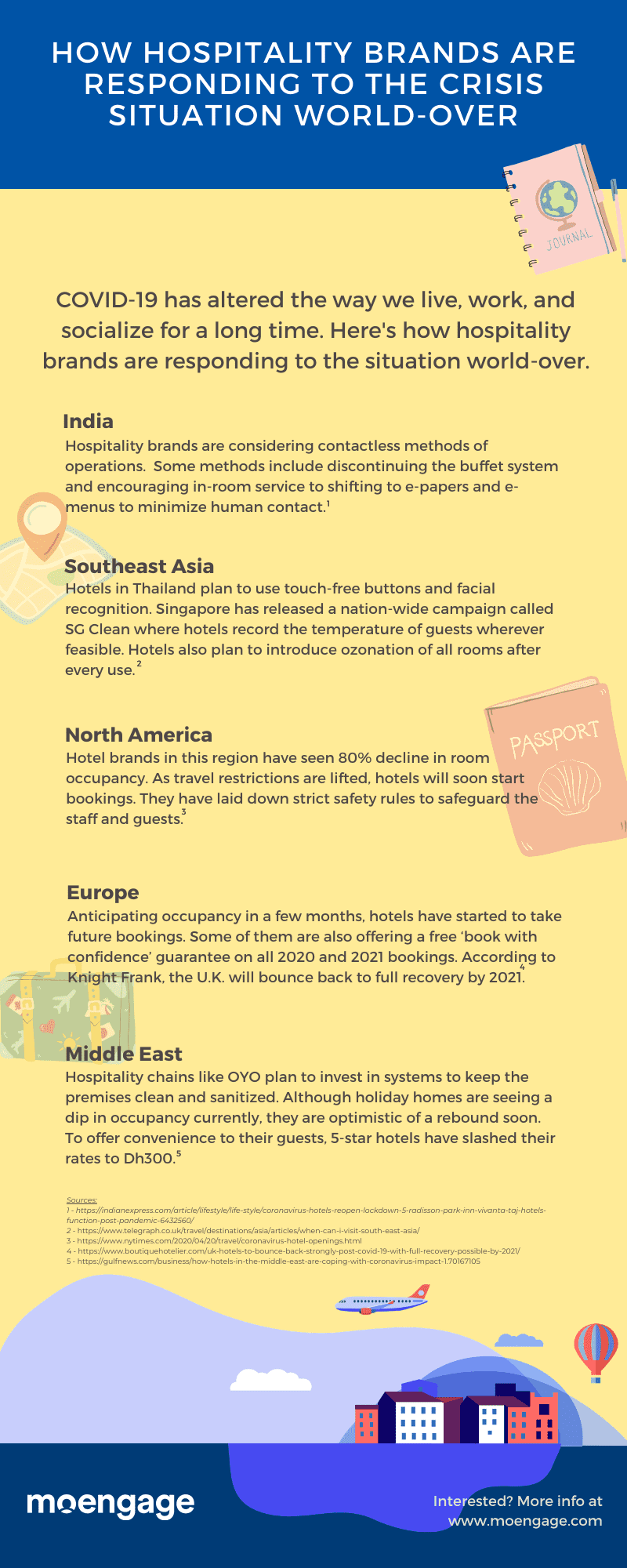
5 Ways Travelers’ Preferences Will Change Post COVID-19 | MoEngage
Five Ways Travelers Preferences Will Change Post COVID-19
More and more countries prepare to return to normalcy by allowing domestic and international flights. However, travelers are skeptical about resuming travel, unless necessary. According to an EY study, there is going to be a shift in the way consumers travel once hotels re-open.
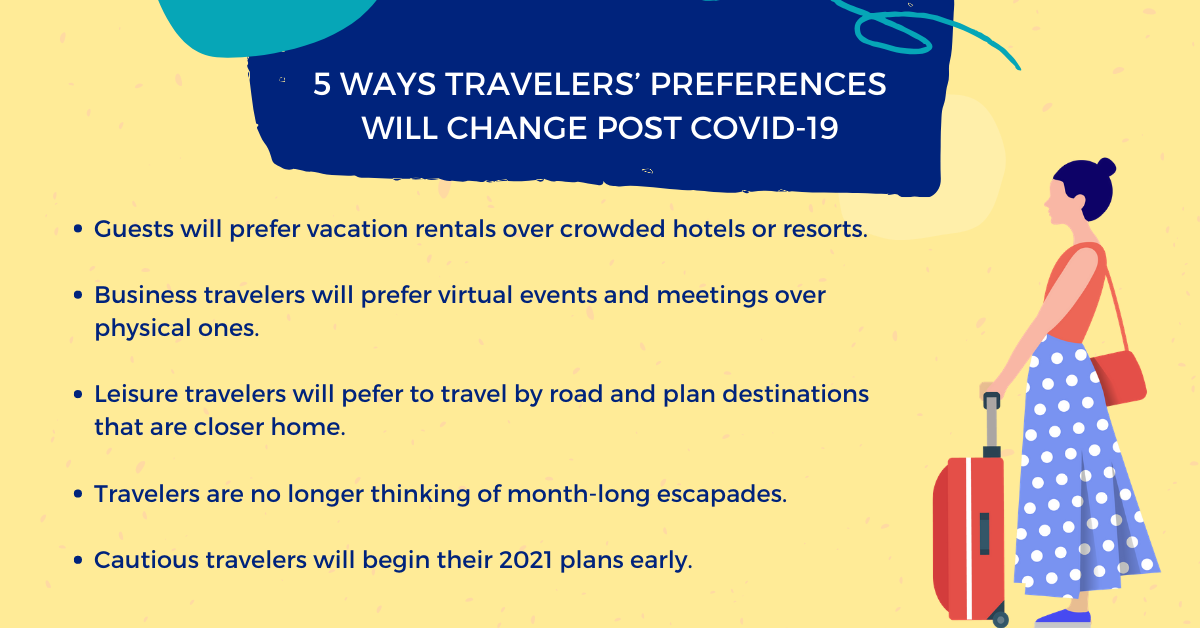
- An increase in demand for remote property: Travelers will prefer vacation rentals overcrowded hotels or resorts to maintain social distancing. Bookings for isolated private homes and villa properties may increase.
- A drop in business travel: More and more tradeshows and conferences have adopted the digital format. Also, businesses have virtual meetings instead of in-person ones. As a result, hotels anticipate business travel to be lower this year. According to the Global Business Travel Association (GBTA), 98% of its member companies have canceled international business trips this year.
- Drive-to-places will become more popular: A survey by Longwoods found that nearly 22% of the travelers have decided to travel by road instead of air, which means, weekend getaways that can be reached in 2-3 hours will see a surge in demand during this year.
- Short-term vacation plans: Consumers are no longer thinking of month-long escapades. Short-term accommodation rentals of 3-5 days are expected to see a surge in demand over long-term accommodation rentals.
- Vacation plans for the future: Consumers who are cautious about traveling immediately are expected to start planning vacations for 2021.
What Should Hotels And Hospitality Apps Do As They Open To Travelers Post COVID-19?
Keeping in mind the concerns that travelers are likely to have, hospitality brands must take every step and precaution to offer a safe and conducive stay to their guests.
Here are a few best practices to consider as you re-open your hotel or app for business:
Cleanliness and hygiene
Cleanliness and hygiene need to take priority now more than ever. Ensure processes for periodic deep-clean within and outside the hotel premises. Offer hand sanitizers monitor the temperature of guests during check-in. Offer separate disposal bags – one for used towels, one for used bedding, and one for waste disposal, and pickup by the housekeeping team.
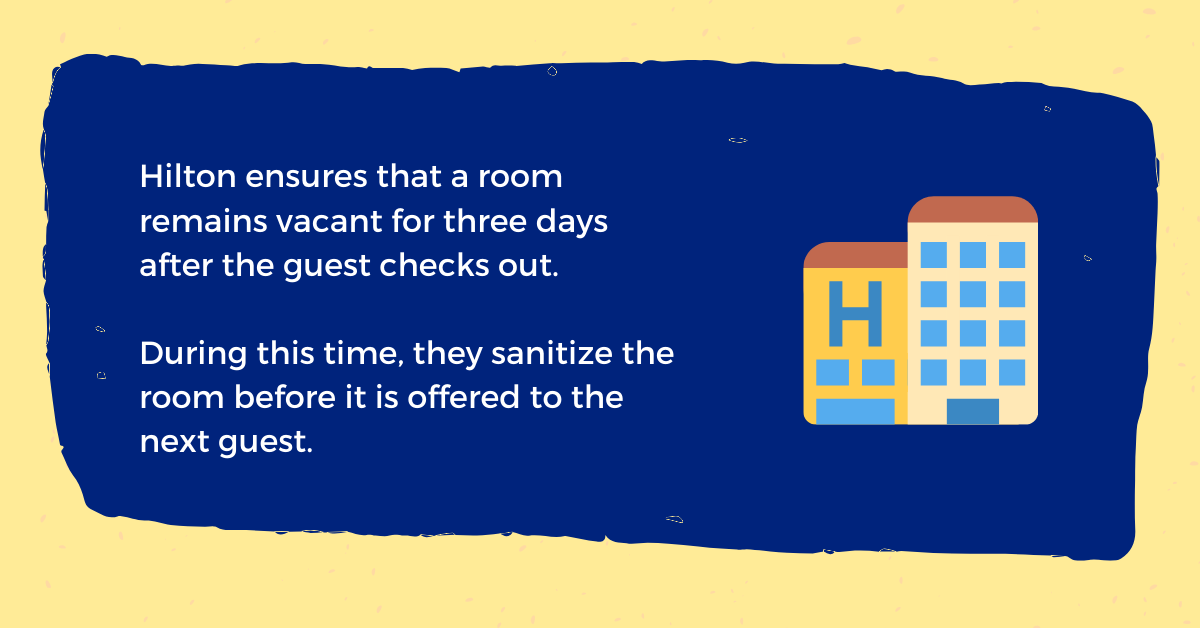
Hilton ensures that a room remains vacant for three days after the guest checks out. During this time, they sanitize the room before it is offered to the next guest. To stay a step ahead, hotels will have to think of new ways to integrate wellness into the spaces that customers pass through usually.
App or website as your primary touchpoints
Alibaba had already set the precedence for minimized human touchpoints last year with its high-tech hotel run entirely by robots.
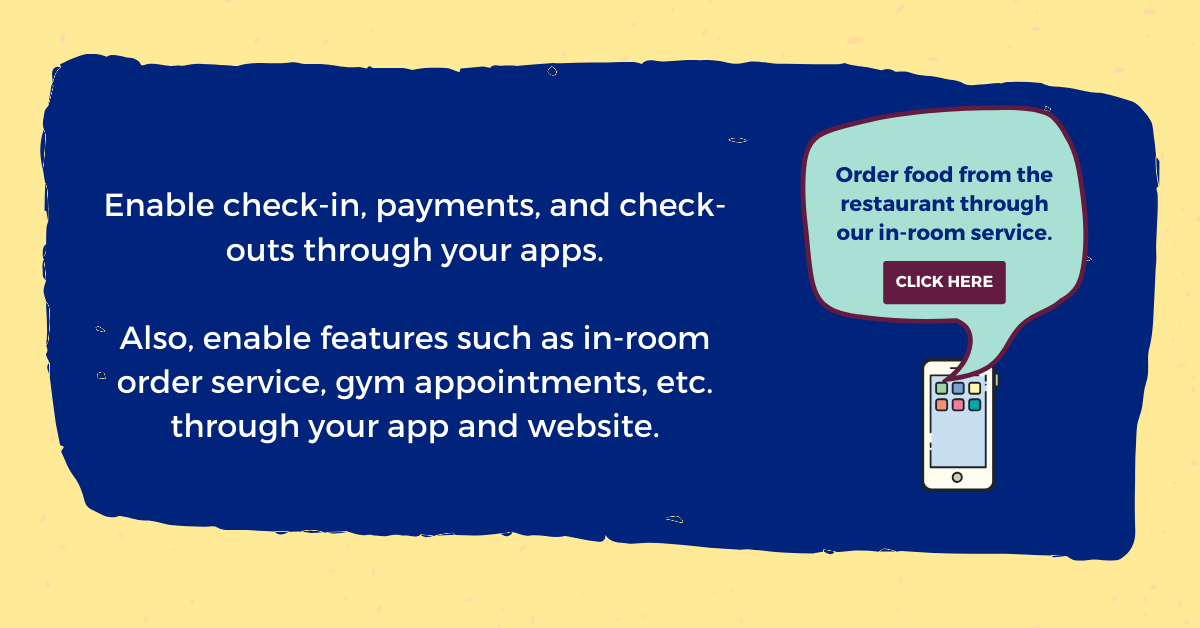
Enable check-in, payments, and check-outs through your apps to avoid the crowd in the lobby. Also, enable features such as in-room order service, gym appointments, etc. through your app and website. Also, consider facial recognition or QR code scans through apps for guests to access the premises, elevators, and rooms.
Improve the in-room experience
Considering that most services will shift in-room, create a positive in-room experience for your guests. From creating a superlative ambiance within the room to introducing new dishes, find ways to revamp the experience, and ensure guests receive everything they need within the room itself.
You can also install virtual assistants such as Amazon Echo within the room, so guests can use it to adjust the room temperature, turn the lights on-off, etc. through voice controls.
Redesign the space
If you’re considering re-opening the dining area, consider redesigning the space to ensure enough distance between the tables. To avoid close contact with other guests, you can also mark the space within the elevator and limit the number of guests using the elevator.
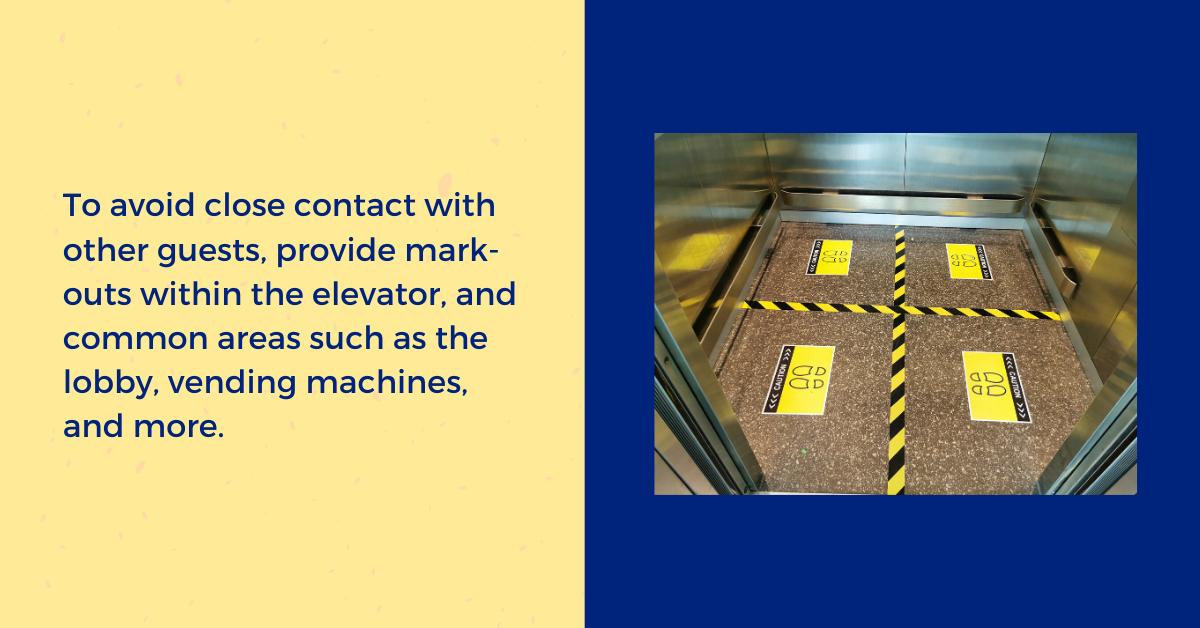
Oyo Rooms, the world’s fastest-growing hospitality app, plans to include markers on the floor to help guests maintain a minimum of 6-foot distance from each other for areas such as check-in, vending machines, etc.
Communicate with your users
Let your guests know when you are ready to re-open. Use digital channels to communicate the measures and safety precautions you’ve taken. Use surveys and feedback forms asking guests to provide suggestions that help them to trust your brand.
Retaining your guests’ trust and assuring them of safety is essential. Ensuring a hygienic environment and communicating them with your guests is the way forward to win customers back.
Here’s What You Can Do Next:
|







